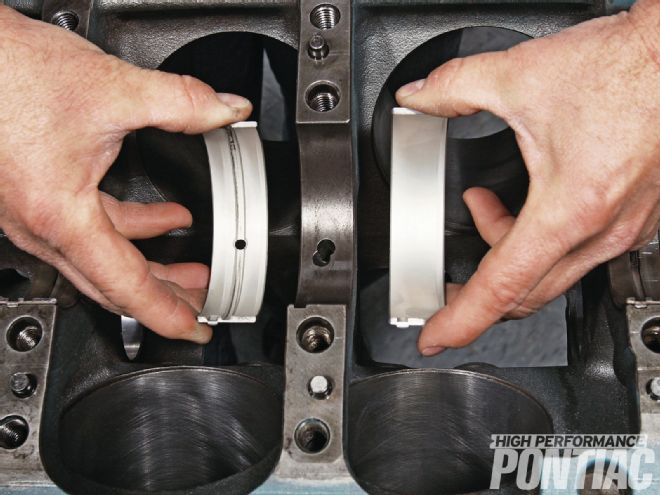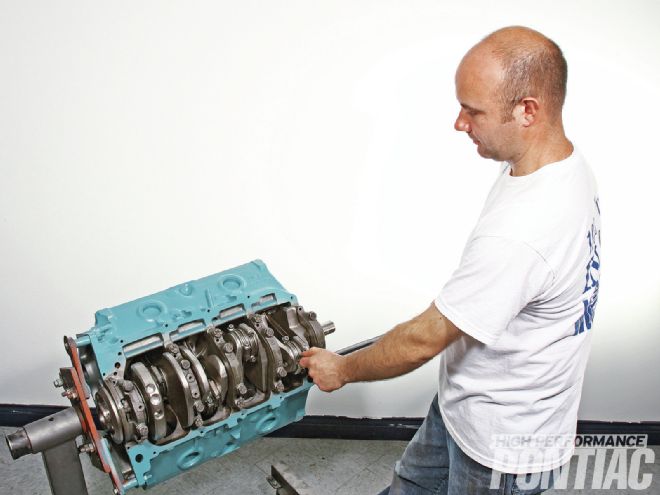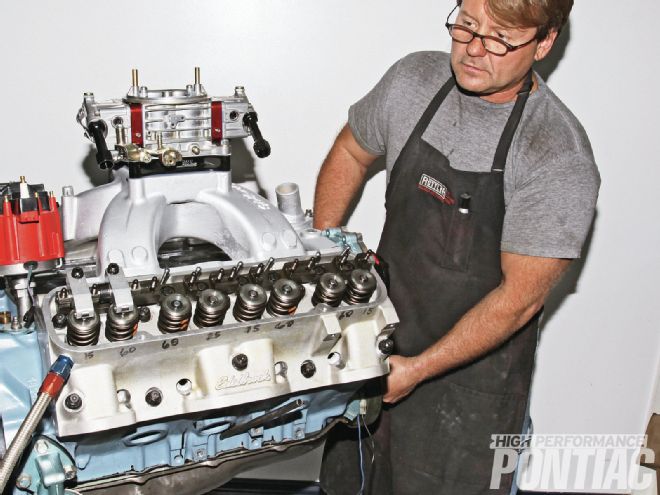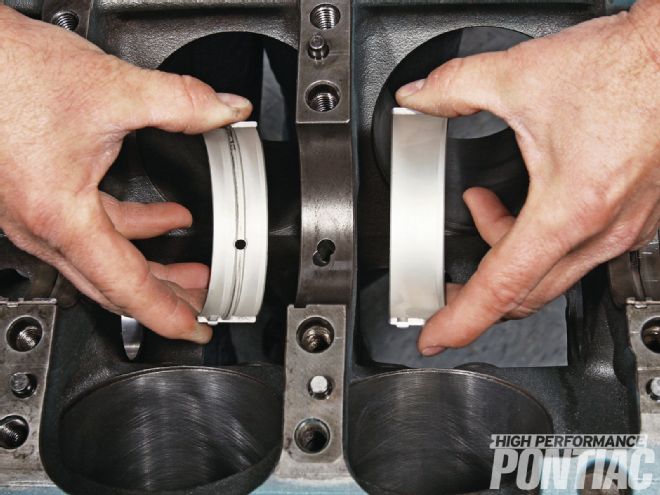
Part 1: Short-Block Prep
Many engine building basics can be gleaned from the Pontiac service manuals, and/or the myriad "Build Your First Engine" articles found in magazines, books, and on websites. In this article, with the help of DCI Motorsports in Atwater, Ohio, we will go beyond the basics and share with you pre-assembly and assembly modifications and procedures that a pro uses to ensure maximum power with durability for his customers. We'll also illustrate a few common assembly mistakes, so you can avoid them.
 Brandon Devies, whose hands you will see in many of these photos, helped with the parts assembly. The engine is an early 389.
Brandon Devies, whose hands you will see in many of these photos, helped with the parts assembly. The engine is an early 389.
Don Johnston, owner of DCI has been in many HPP stories over the years. He has over 30-years experience in building engines, most being Pontiacs. From stock-spec restored engines, to powerful street powerplants, and full race motors, DCI builds them all.
He also designed and manufactured the Tiger head for Pontiac race engines, which has been covered in HPP before. Along with running his engine and restoration/modification shop, Don is also developing new versions of Pontiac's famed Ram Air V head, which he says will be available soon.
 Don Johnston of DCI Motorsports will provide his insights regarding building a durable Pontiac engine. (No, this is not the early 389 engine.)
Don Johnston of DCI Motorsports will provide his insights regarding building a durable Pontiac engine. (No, this is not the early 389 engine.)
Given his experience in Pontiac engine building and product development, HPP thought DCI would be a great choice to provide some engine-building do's and don'ts to help you with your next build.
Don and his lead tech, Brandon Devies, will discuss the short-block in this article. We will continue with more short-block info and the top-end in the next issue.
 Get Your Bearings Straight 18. Do Make sure you properly locate the main bearings in the block. The one shown on the left with the oil hole is for the block and the one on the right with- out the oil hole is for the cap. Yes, it’s basic knowledge, but Don says he’s seen engines damaged in the past due to this simple mistake.
Get Your Bearings Straight 18. Do Make sure you properly locate the main bearings in the block. The one shown on the left with the oil hole is for the block and the one on the right with- out the oil hole is for the cap. Yes, it’s basic knowledge, but Don says he’s seen engines damaged in the past due to this simple mistake.